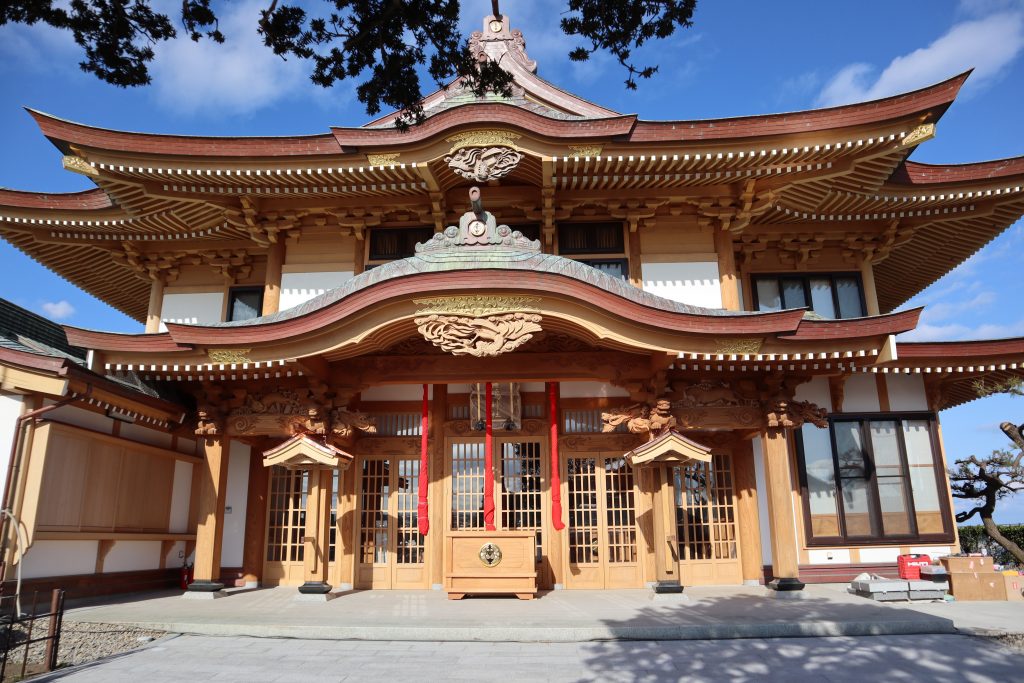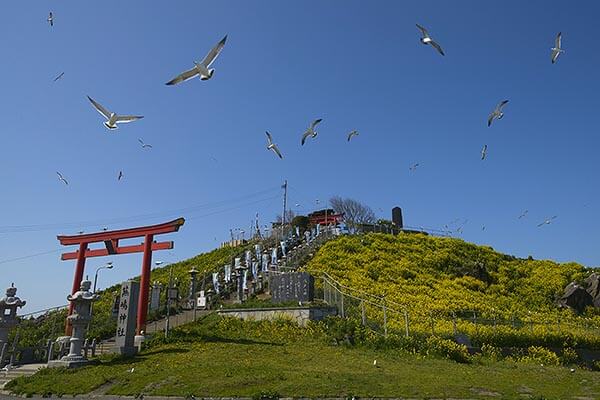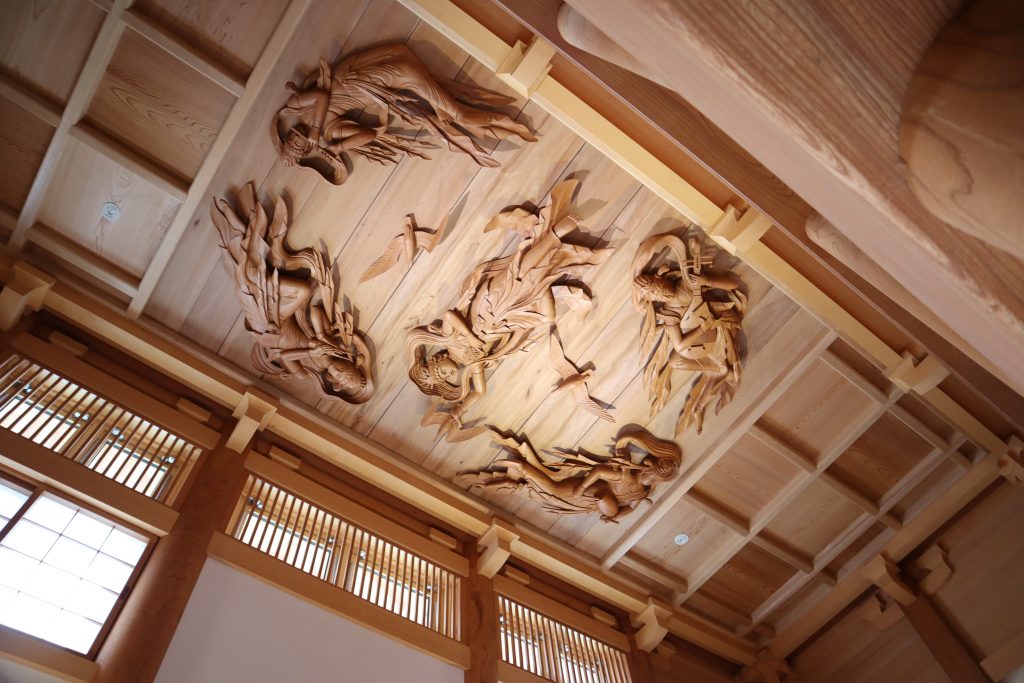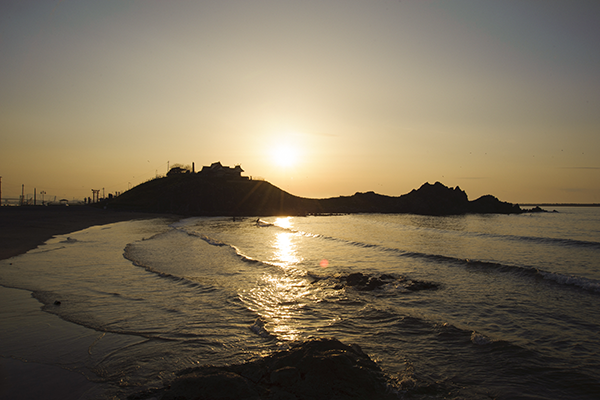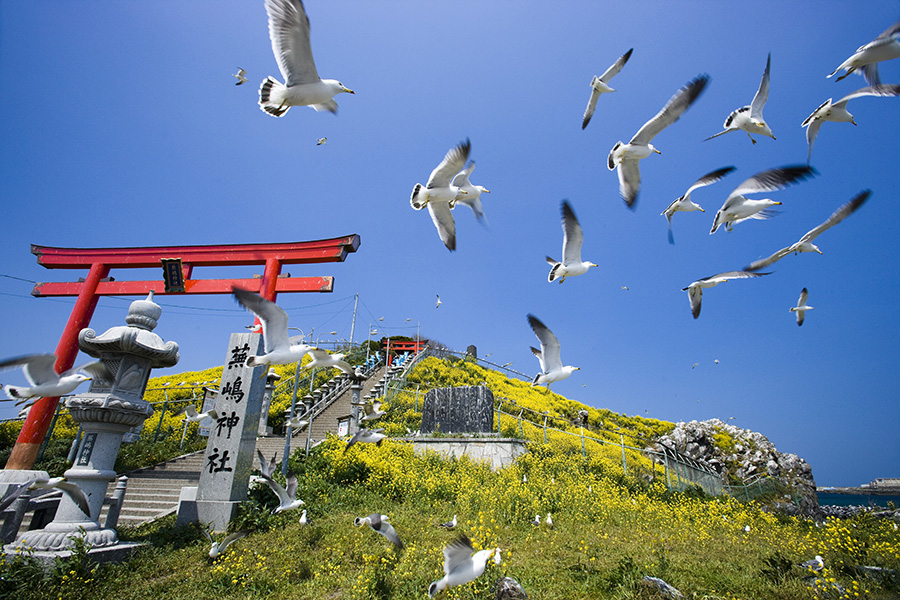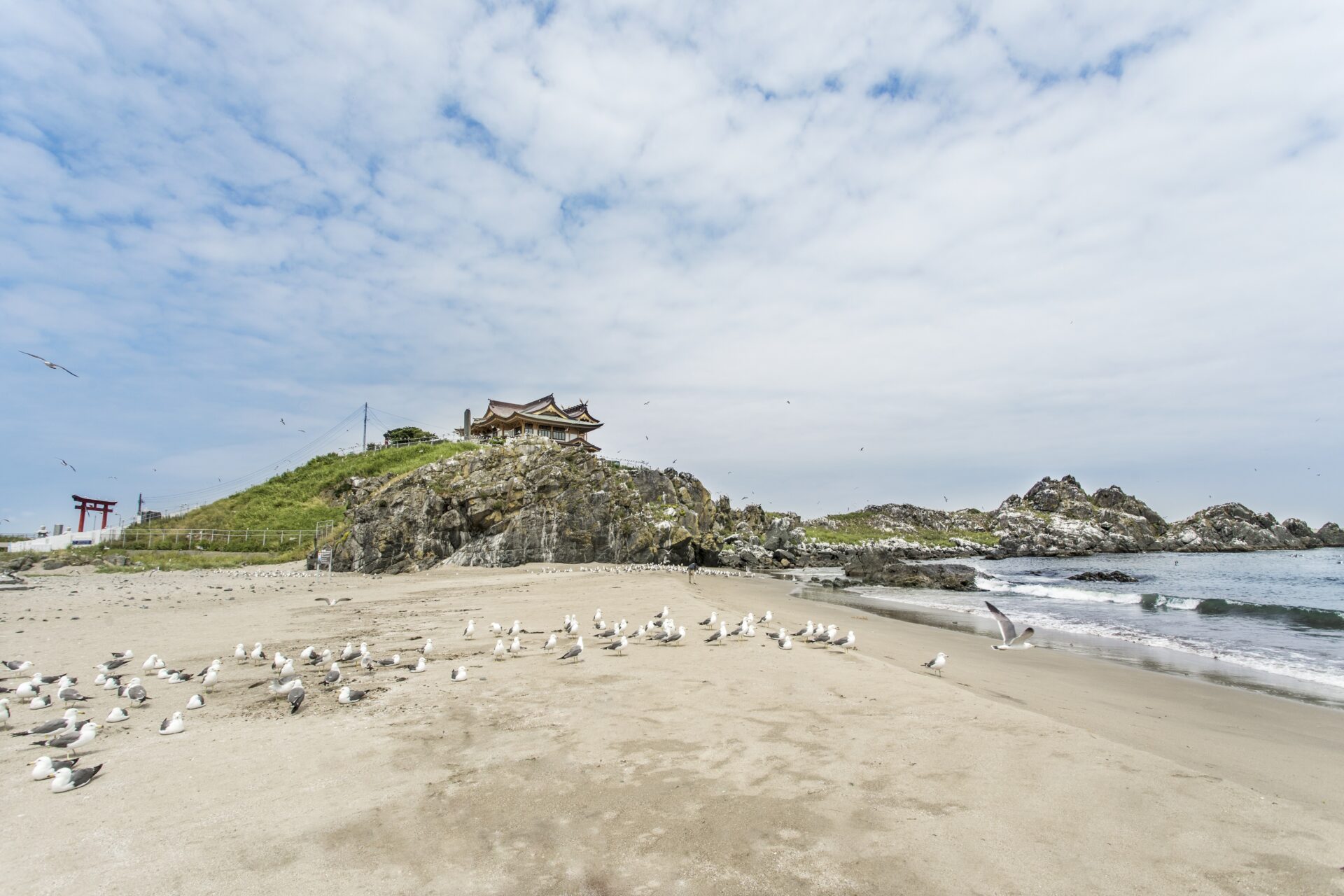The origin of Kabushima Shrine
According to shrine legend, Kabushima Shrine was first constructed in 1706. The shrine has been loved by the local people since those times and bustles with worshippers during the New Year’s holiday. It is especially busy during the Kabushima Shrine Countdown Festival, where about 100 fireworks are set off to celebrate the new year.
The shrine was completely destroyed in a fire on November 5, 2015. Shortly after 4 a.m., the security company for the shrine noticed that the smoke alarm went off and contacted the fire department, which subsequently discovered the fire. It didn’t take long for the wooden one-story building of about 280 square meters to burn down, and the shrine’s pavilion was completely destroyed. The incident was featured on the news nationwide and many people donated money to help with reconstruction efforts.
In November 2016, the reconstruction of Kabushima Shrine started. It was briefly halted during the breeding season of the black-tailed gull, from April to August. It eventually took about five years to rebuild the shrine.
In December 2019, the reconstructed Kabushima Shrine was unveiled to the media. The roof of the shrine, which is said to represent a black-tailed gull flapping its wings, and the vaulted ceiling carvings and “dragon” ceiling paintings are among the many renovations. The building was transformed into a two-story wooden structure made mainly of zelkova and cypress produced in Aomori Prefecture, and its 22 eight-meter-long pillars help the building withstand strong winds.
For more information about Kabushima, Click Here
Tourists attractions around Kabushima Shrine
The Kabushima Area around Kabushima Shrine has many tourist attractions, including activities and places to eat.
The Michinoku Shiokaze Trail is long and connects Hachinohe City in Aomori to Soma City in Fukushima. Kabushima is the starting and ending point of the Michinoku Shiokaze Trail, which is 1,000 km long with areas full of beautiful nature.
You can also enjoy fresh and delicious seafood at the restaurants around Kabushima, which is located close to the sea. The food culture of the fishing town of Hachinohe is worth a visit for the great seafood alone.
Photogallery
